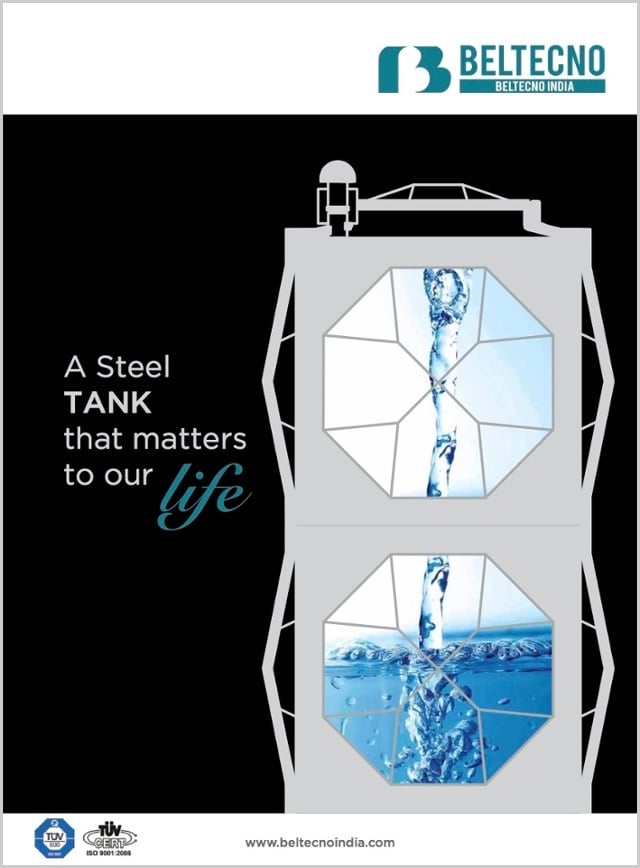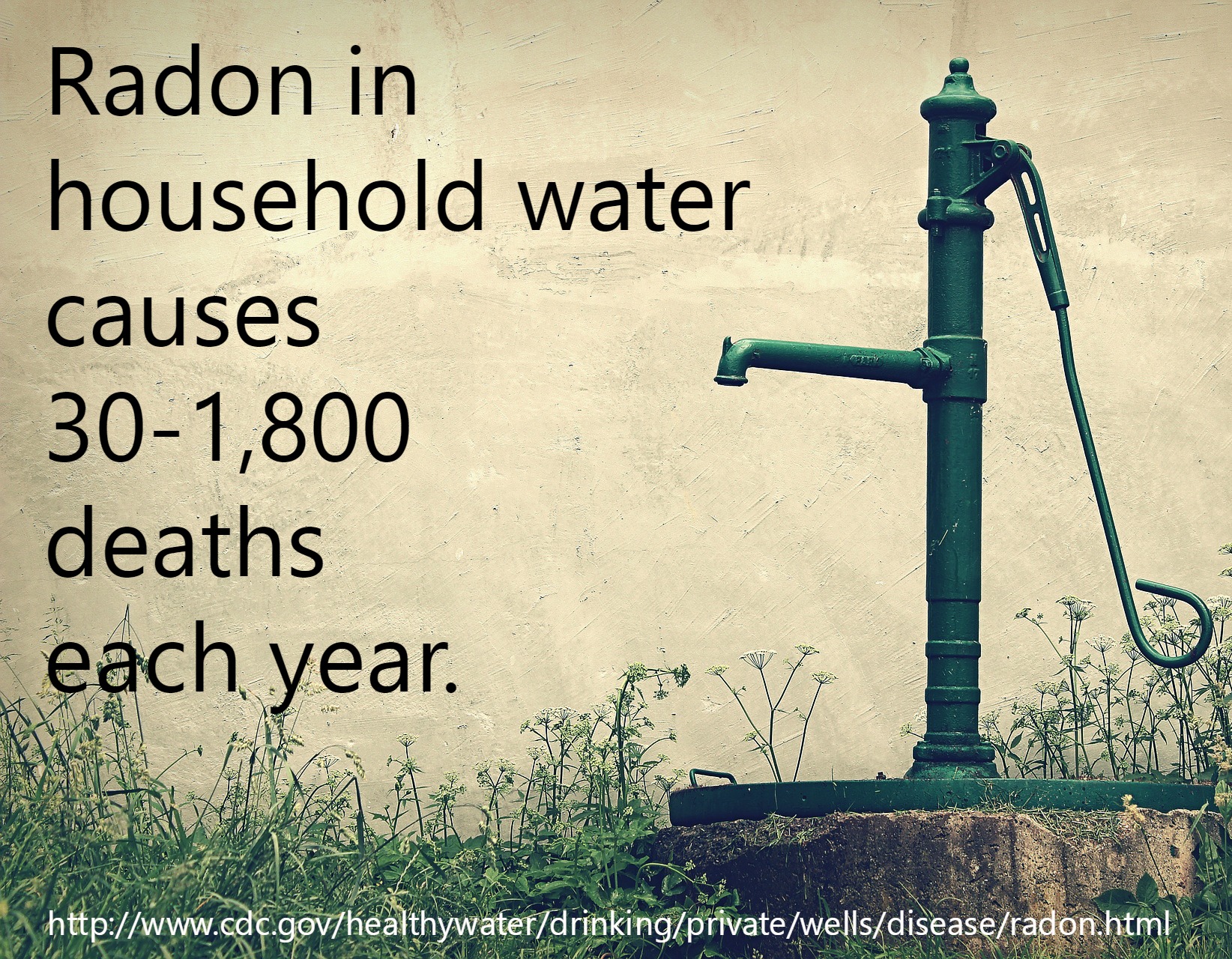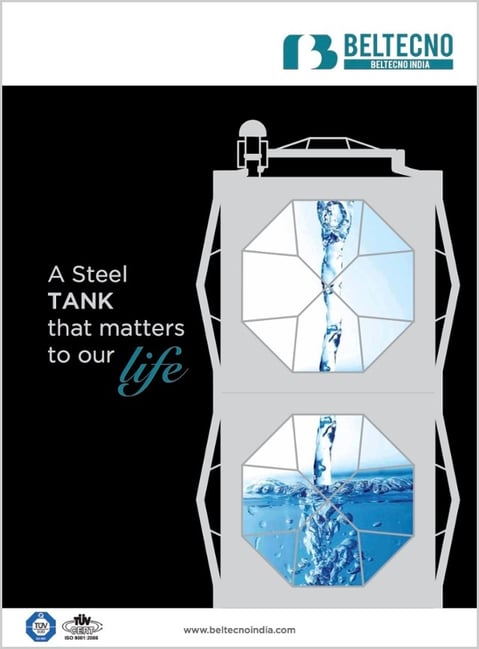Mitigating Radon Contamination In Groundwater by Beltecno Stainless Steel Tanks.

Groundwater is one of the primary sources in most of the countries, contributing to drinking, domestic use, irrigation, and others use which is abundantly available. As per WHO facts 5.2 Billion people used safe drinking water service, but 844 Million people lack basic drinking water service and 263 Million people have limited service [1].
It is very essential for us to understand the nature/quality of water that is available for usage, which is to know how suitable is the source for usage. Usually Groundwater or the source being contaminated is one of the common problems observed over decades, common contaminants evident are Salinity/High TDS in deep aquifers, coastal aquifers, near salt-bearing rock formations, Turbidity, Hardness in carbonate formations, E-coli, Fluoride in sediment rocks or crystalline rocks, Arsenic in quaternary sedimentary formation and Nitrates near agricultural farms, a few places we also observe traces of heavy metals in groundwater.
We must have heard about these contaminants most commonly from different sources and also understand the risk and threats for human health when exposed for the long term, but surprisingly we have recently exposed to a most uncommon contaminant that is “Radon” in few places which is a radioactive gas.
Radon Contamination:
Radon (Rn) is an odorless, colorless, water-soluble and tasteless gas from natural radioactive decay of Uranium (which is a spontaneous process), Radon as gas spreads into groundwater from rocks and soils depending on the porosity of rocks. Rn has the highest water solubility at lower temperatures. High levels of Rn in drinking water poses a serious health risk and it is carcinogenic, it can damage the lung tissues and can cause lung cancer, but it is always dependent of a case to case basis. Drinking water contaminated with Rn can be indigested and can seriously cause damage to the stomach lining. Usually, when we drink Rn contaminated water 1-2% of gas is released to air, which might be a potential risk at Bathrooms, showers increasing the concentrations. Radioactivity is measured in Becquerel corresponding to one radioactive disintegration per second, Rn is measured as Becquerel perlite (Bq/L) [2].

Contaminated Sites:
Here are some the regions in India detected with Radon contamination, Usually the content of Rn is seen in groundwater sources than surface water, High Rn concentrations is observed in groundwater or river water of Siwalik, Punjab and Garhwal Himalayas (5BQ/l -887 Bq/L), Doon Valley Himachal Pradesh (25-95 Bq/L), Bangalore (55.96-1000 Bq/L) [3], Mysore, Tumkur, Chamarajanagar of Karnataka, Springs of Sikkim, Bhutan, West Bengal, Uttarakhand (0.1-441.2 Bq/L) [4]. Permissible levels of Radon in groundwater sources are 11.38 Bq/L but most of the places listed below have very high Rn levels.
Measuring Rn concentration:
A most popular method used to analyze the contamination levels of Rn in water is RAD7 a continuous Radon gas monitor used to calculate the Rn concentration based on solid-state silicon(Si) detector by Durridge Company Inc, USA.
Purging and determination of the Radon concentration are the two functions of RAD7, purging is used to remove undesired humidity and moisture from the measurement chamber. Initially contaminated water is pumped into RAD7 for 5 mins, 95% of Rn gas is sucked and passed to the measurement chamber, about 2 to 2.5 K Volt is applied between the hemisphere and the detector creating the electric field, this field will drift the positively charged particles on to the detector, Rn will be decayed to Po218 which has half-life of 3 min. [5] which decays on the detectors active surface producing an electrical signal that is fed to the microprocessor which provides the data.
Eliminating the Rn:
As we know Rn is a gas and it can easily be escaped into air when it is taken out from the groundwater source the concentration levels are reduced but it is always advised to store the contaminated water source in the overhead tanks, or storage tanks, Beltecno India has been a pioneer in producing quality water tanks adopted for various applications and can be utilized to store, which can be exposed to air, or aeration technique can be implemented, which makes the Rn gas to escape. The contaminated water source can also be boiled. The life of Rn is very less ~3 to 4 days, the concentration will reduce and the water is safe to be consumed.
It is our duty and responsibility to understand the water source we depend on to consume on a day to day basis and to take necessary steps to make it safe before we consume. Beltecno is constantly involved in creating awareness about the usage of Hygienic water storage method by using Stainless steel water storage tanks .
References:
[1] https://www.who.int/en/news-room/fact-sheets/detail/drinking-water
[2] https://www.epa.ie/pubs/reports/radiation/RPII_Radon_Drinking_Water_Brochure_14.pdf.pdf
[3] https://www.deccanherald.com/content/354166/bangalores-ground-water-has-high.html
[4] JOUR.GEOL.SOC.INDIA, VOL.77, MAY 2011
Beltecno India is manufacturing Stainless steel water tanks in India, for more information on product range and other technical aspects you can download the brochure below.


